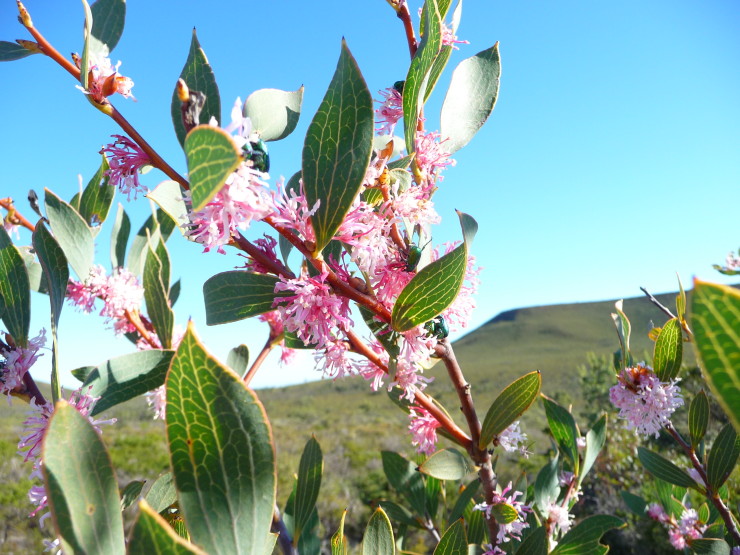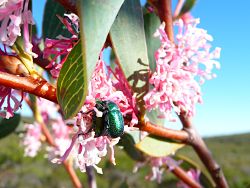Hakea Neurophylla – Flower of the month

Hakea Neurophylla – Flower of the month
Posted on
Hakea Neurophylla is a rare and beautiful plant found on the sand plains around Mt Lesueur National Park and Eneabba. This area is a mecca for plant lovers and is considered to be one of the top three places to see wildflowers in Western Australia, along with the Stirling Ranges and the Fitzgerald National Park.
The name Neurophylla refers to the prominent veins in the leaves. Neuro = nerve/vein, phylla = leaf.
 The leaves are especially beautiful when the sun shines through them and the flowers are like a little pink firework.
The leaves are especially beautiful when the sun shines through them and the flowers are like a little pink firework.
The flowers come directly out of the branch of the plant in early August and the jewel beetles love em!
Hakea Neurophylla are unusual in that they do not seem to have any close relatives. The theory is that they are a relic of a time when much of the south west was covered in sub-tropical rainforest and all their buddies have died out.
The Neurophylla has managed to hang on by attracting some creepy crawlers to pollinate them.
Let me explain.
Back when the South West was more rainforesty (sure that’s a word), the shrubs that would have dominated the environment would have been pollinated by small animals and insects that crawled up the branches. Plants on the rainforest floor don’t tend to be pollinated by birds as the canopy is so high up above.
The Hakea Neurophylla’s cousins didn’t manage to survive the transition from rainforest to semi arid, and it is probably because their pollinators died out.
If you want to see one of these little beauties in their natural setting, plan a trip to Mt Lesueur in late July early August. Mt Lesueur is 3 hours north of Perth and an easy drive on the new Indian Ocean Drive. You can also visit the Pinnacles while you are up there in nearby Cervantes.
Or, come with us on our Kalbarri and Abrolhos Island tour which we conduct each August.



